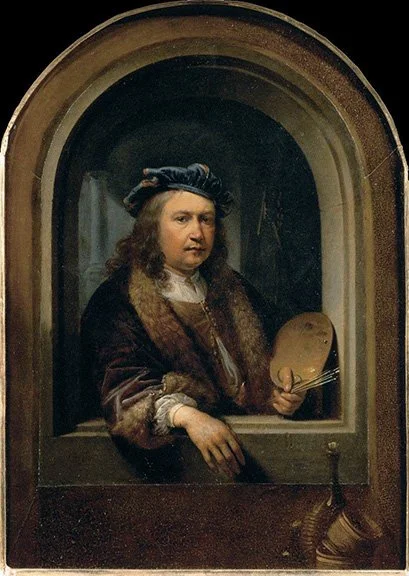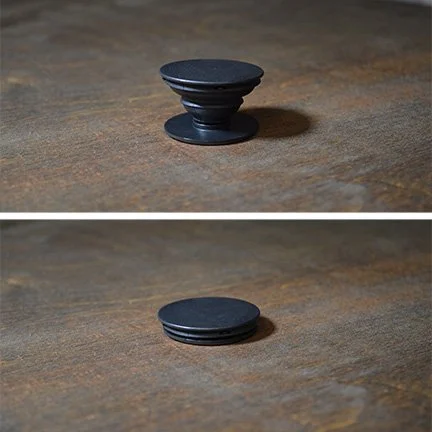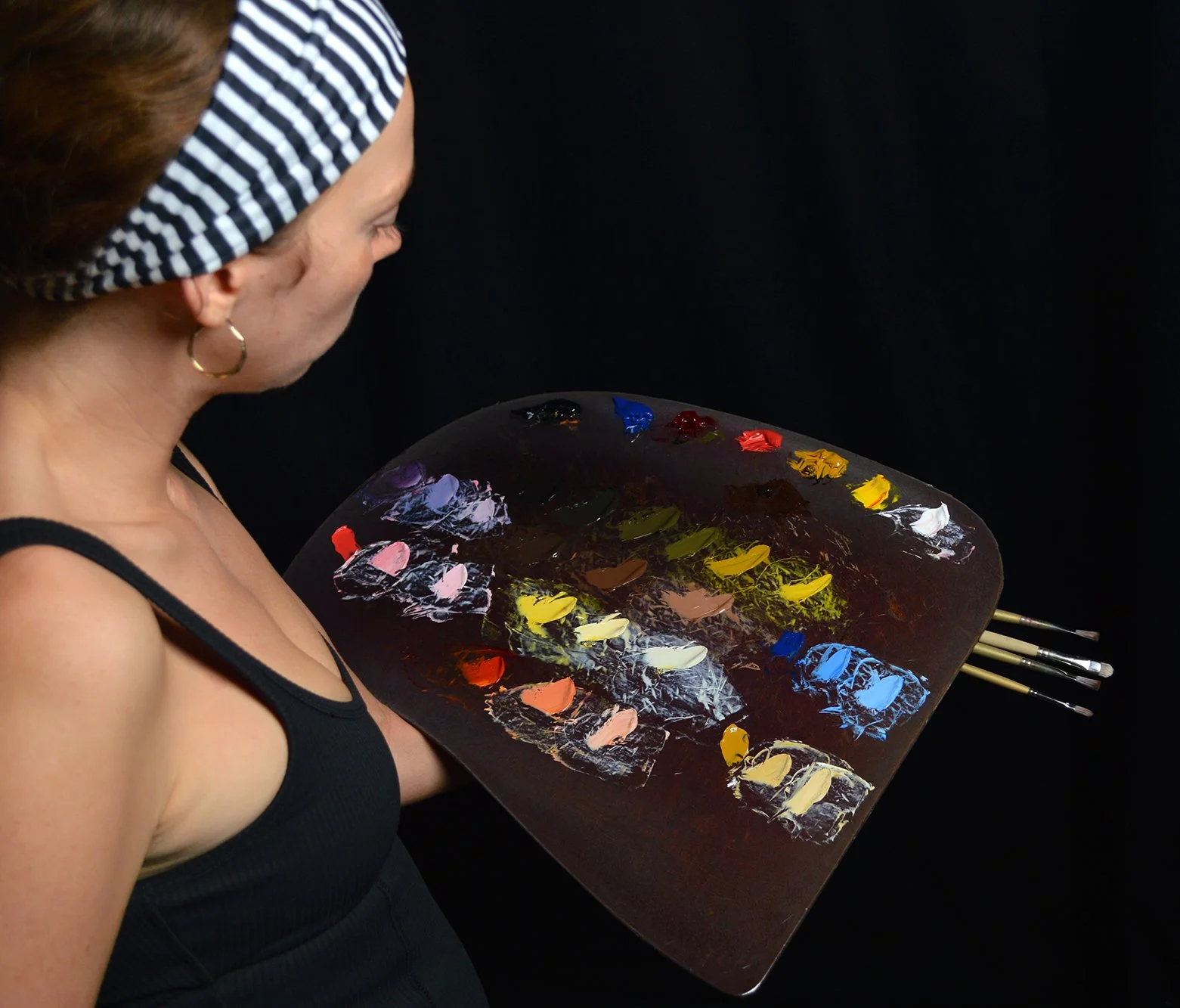The ZAFA Palette
Tradition has given us the palette we all know, but it hasn’t solved its problems. The ZAFA Palette offers a simple, thoughtful update—an artist’s tool, redesigned by artists.
To understand the benefits of the ZAFA Palette design, we first need to look at the evolution of the painter’s palette throughout art history. Each iteration of the palette served a specific function or responded to problems artists faced with the designs of their time. However, like many everyday objects, tradition can be a trap, locking us into a well-trodden but limited path. We assume things are the way they are simply because “that’s how they’ve always been.”
It’s exciting to revisit a concept from first principles in the modern day. With today’s innovations, we can often create solutions that were not possible in the past. That is exactly what we’ve done with the ZAFA Palette—improving on every measurable metric compared to palettes throughout history and those available today.
The History of the Painter’s Palette
The painting palette has evolved slowly, with only a handful of key innovations spanning centuries.
In ancient civilizations like Egypt, Greece, and Rome, artists didn’t use palettes in the modern sense. Instead, pigments were prepared in bowls, shells, or stone surfaces, typically at stationary setups. Paint was mixed ahead of time rather than during application. This remained largely unchanged through the medieval period, when illuminators and painters still relied on small containers and trays. Color mixing was minimal, with most hues applied pre-prepared in carefully planned layers.
It wasn’t until the early Renaissance that something resembling the modern palette emerged. With the rise of oil painting, artists began using flat, handheld wooden boards as portable mixing surfaces—sometimes with handles, sometimes simply gripped. These resembled cutting boards or paddle-ball paddles. For the first time, real-time color mixing became central to the painting process.
By the High Renaissance and Baroque periods, the thumbhole was introduced, allowing artists to slide their thumb through the palette and hold it against their forearm or torso. At first, the thumbhole was located in the center, which balanced the weight but reduced the available mixing area. To solve this, the hole was moved off-center toward the edge, and the palette shape evolved from oval to kidney-shaped—an iconic form that persists today.
This “classic” design, however, had three drawbacks:
Poor ergonomics. The off-center hole made the palette unbalanced. Mixing applied force where there was no support, straining the thumb, sometimes cutting off circulation.
Added weight. To counteract this imbalance, makers added weight to one side, making palettes unnecessarily heavy.
Lost workspace. The hole itself, the grip, and brushes held in the same hand rendered a quarter to a third of the mixing surface unusable.
In the 18th and 19th centuries, the thumbhole palette became standard in academic studios. Made of varnished wood, it offered more space than earlier versions, but still caused thumb and wrist strain. Artists like John Singer Sargent and Bouguereau used them, but discomfort was common. As studio practices formalized, this design became the unquestioned norm.
The 20th century introduced new materials—plastic, acrylic, glass—but the design barely changed. While some artists adopted tabletop palettes, the classic handheld form persisted, despite its inefficiencies. Brushes, paints, and supports evolved, yet the palette remained stuck in the past.
Only in the 21st century have artists begun to seriously re-examine this tool. Despite centuries of innovation in art-making, the palette had remained virtually unchanged—until now. The ZAFA Palette challenges tradition, offering a more ergonomic, balanced, and efficient alternative for today’s painters.
The ZAFA palette
The ZAFA Palette: Problems & Solutions
ZAFA identified three core problems with the traditional painter’s palette:
Problem 1: Terrible ergonomics.
The off-center thumbhole places strain on the thumb and often cuts off circulation.
Problem 2: Unnecessary weight.
Counterweights are added to offset poor ergonomics, making palettes heavier than they need to be.
Problem 3: Wasted workspace.
The thumbhole, grip, and brushes held in the same hand reduce usable mixing space by up to one-third.
The ZAFA Palette solves all three with its elegantly simple design:
Solution 1: Ergonomics.
With a PopSocket-style handle, ZAFA Palettes are no longer one-size-fits-all. Each palette is customized to the optimal position for the artist. Because the hand rests flat against the back, there’s no thumb crimping, circulation issues, or strain. The force is supported in the most logical place, making the palette far more comfortable.
Solution 2: Weight.
Without the thumbhole or counterweights, the ZAFA Palette is as light as possible, with no unnecessary bulk.
Solution 3: Workspace.
With no thumbhole, the entire surface is usable for mixing. Brushes held in the same hand are tucked neatly behind the surface instead of overlapping it, further improving functionality.
Additional Innovations
We didn’t stop there.
Another issue with many palettes is color value. Just as artists tone a canvas to a middle value before painting, a palette should also be a neutral middle tone. This allows for more accurate color mixing. On a white palette, colors look too dark; on a cool gray palette, colors look too warm.
Each handmade ZAFA Palette is pre-toned to mimic a canvas ground, providing a true, balanced environment for mixing. The natural wood grain gives every palette a unique, beautiful appearance.
Sealed and ready to use.
Every palette is hand-oiled with a linseed finish, sealing the wood and jumpstarting the natural “breaking in” process.
Why Choose ZAFA?
The ZAFA Palette is lighter, more ergonomic, and offers more workspace than any other palette on the market—while also being more beautiful.
Available now for $60.
The ZAFA Palette is handmade with care to give artists a lighter, more ergonomic tool with a larger work surface. Each palette features a customizable grip for comfort, and comes pre-toned and oiled with a beautiful wood finish






















